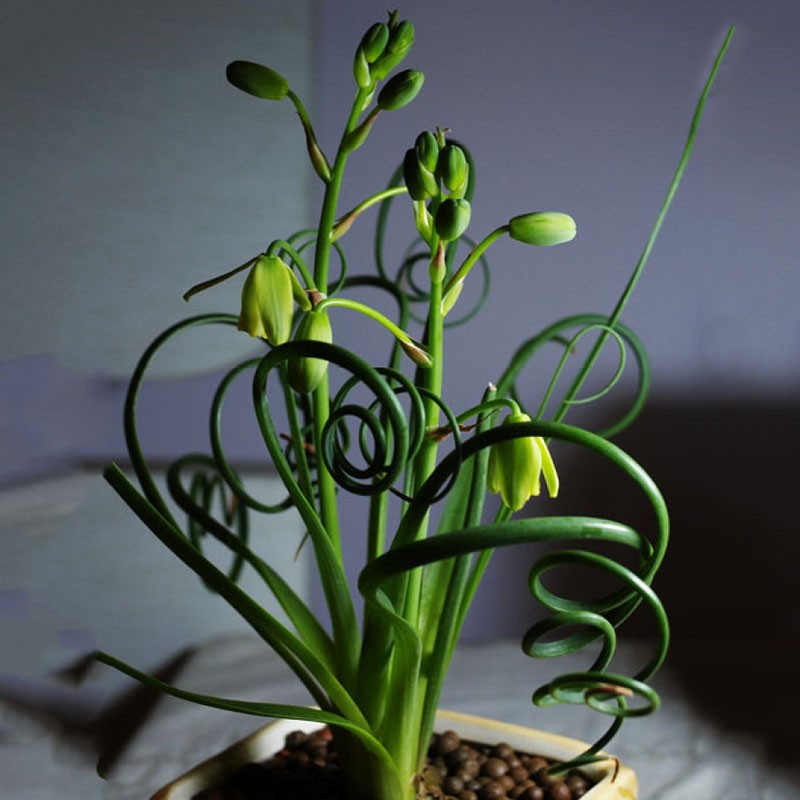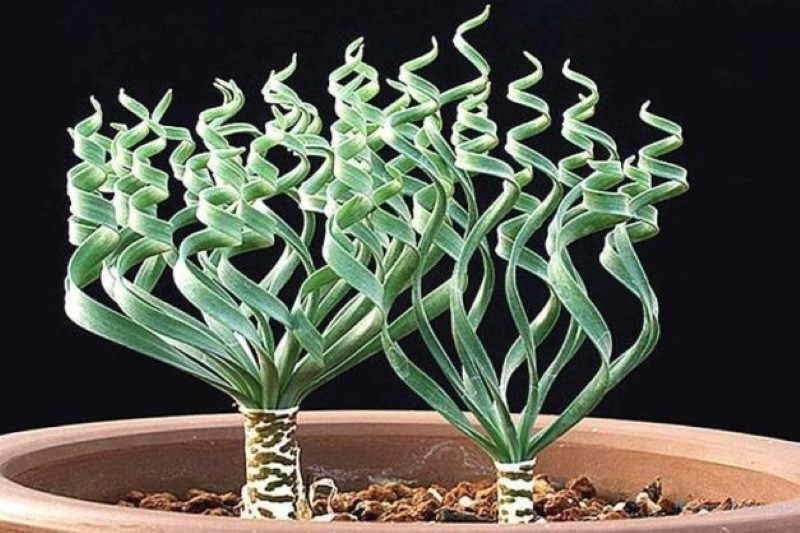Do you have jellyfish tentacles - trachyandra flower, home care
 Succulents are considered the most unpretentious plants, so it is not surprising that many growers prefer to grow them. And if cacti and Kalanchoe are found on almost every windowsill, then not everyone even knows about this flower. Trachyandra will delight you with amazing forms, care for which at home has its own characteristics, despite its unpretentiousness. It grows naturally in Madagascar and South Africa. Their hot climate forced the plant to adapt to both rare rainfall and high temperatures, hardening its character. Therefore, as a room culture, it perfectly tolerates the microclimate of the room and even the long absence of the owners.
Succulents are considered the most unpretentious plants, so it is not surprising that many growers prefer to grow them. And if cacti and Kalanchoe are found on almost every windowsill, then not everyone even knows about this flower. Trachyandra will delight you with amazing forms, care for which at home has its own characteristics, despite its unpretentiousness. It grows naturally in Madagascar and South Africa. Their hot climate forced the plant to adapt to both rare rainfall and high temperatures, hardening its character. Therefore, as a room culture, it perfectly tolerates the microclimate of the room and even the long absence of the owners.
Plant features

The plant has many other names, among which the most commonly used are trachandra and jellyfish tentacles.
 Almost all trachyandras have a root system - a vertical rhizome with round white roots, sometimes bulbous. But this is not surprising, but the shape of the leaf plates. A short woody stem grows from the root outlet, covered with leaves on all sides. They are fleshy, narrow and long, directed straight up, and the shape depends on the variety. There are types with round, triangular and ribbon-like foliage. It grows in the form of a dense rosette, while it is even only in the lower part. After a couple of centimeters from the soil, the leaves begin to whimsically twist in a spiral. Trachyandra blooms with white flowers in the shape of bells with protruding petals. Some species smell good as vanilla.
Almost all trachyandras have a root system - a vertical rhizome with round white roots, sometimes bulbous. But this is not surprising, but the shape of the leaf plates. A short woody stem grows from the root outlet, covered with leaves on all sides. They are fleshy, narrow and long, directed straight up, and the shape depends on the variety. There are types with round, triangular and ribbon-like foliage. It grows in the form of a dense rosette, while it is even only in the lower part. After a couple of centimeters from the soil, the leaves begin to whimsically twist in a spiral. Trachyandra blooms with white flowers in the shape of bells with protruding petals. Some species smell good as vanilla.
The hotter it is in the room and the more light the succulent receives, the more the leaves swirl.
Trachyandra - home care
 A succulent plant needs good lighting, so don't place it on the north side. Otherwise, the leaves will lose their original shape and stop spinning. At the same time, do not forget to shade your pet at lunchtime in the summer so that direct rays do not hit him and do not leave a burn on the juicy spirals.
A succulent plant needs good lighting, so don't place it on the north side. Otherwise, the leaves will lose their original shape and stop spinning. At the same time, do not forget to shade your pet at lunchtime in the summer so that direct rays do not hit him and do not leave a burn on the juicy spirals.
Observe moderation with the air temperature - the tentacles of the jellyfish do not like heat. Optimum indicators for a plant are at the level of 20-22 ° C heat. But the succulent tolerates dry air perfectly, so there will be no problems with it, even during the heating season.
Taking care of trachyandra will not oblige you much:
- water it once a week, preferably through a pan (in winter, generally once every 3-4 weeks);
- feed once a month during the summer, using fertilizers for succulents;
- transplant young bushes annually, and every 2-3 years - adults (the pot should be shallow).
It will be easier for you to propagate trachyandra at home by cuttings or daughter outlets.